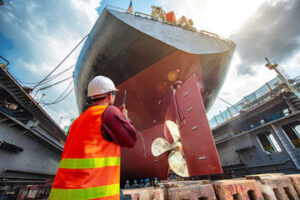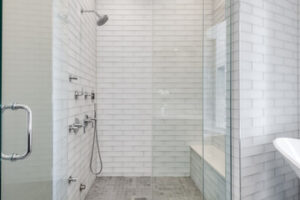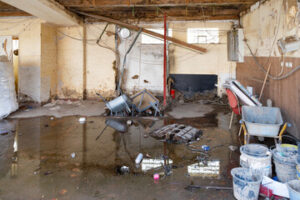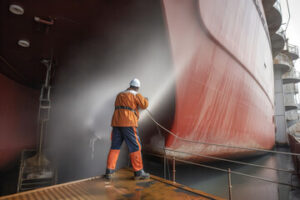What Do Residential Roofers Do?
Residential roofers offer a variety of services, from roofing repairs to complete installation. They can also provide roof inspections and guidance in selecting the best roofing material for your home.

Roofing jobs are among the most dangerous in the industry, and workers face high risks on rooftops. Therefore, residential roofers must prioritize safety protocols and adhere to strict regulations. Visit Website to learn more.
Roofers work on all aspects of residential roofing, from installing new roofs to repairing existing ones. They must be knowledgeable in building codes, roofing materials, and installation methods. They may also need to obtain certification or licensing, depending on the state in which they live and work. They should also be familiar with local requirements, as these could affect the way in which a roof is installed.
In general, a roofer should have high-quality insurance policies and warranties. This will protect homeowners from liability and ensure that any injuries or accidents that occur during a job can be covered by workers’ compensation insurance. In addition, it will prevent medical bills for a roofer’s employees from being deducted from the homeowner’s property taxes.
Generally, a roofer’s qualifications include a high school diploma or equivalent and trade school or an apprenticeship. They should be able to pass an exam and provide proof of insurance before they can start working. Many states have specific licensing requirements for roofing contractors, including a background check and financial solvency. Other requirements may include insurance, licensing fees, and a bond.
The qualifications for a roofer also depend on the size and complexity of the project. For example, in Alaska, all roofing contractors who are paid to perform roof repairs or installations on a one- to four-unit owner-occupied residence must be licensed by the state. In order to get a license, the contractor must submit an application, pay the applicable fee, and provide all relevant documentation, such as exam results, proof of experience, and financial solvency.
Similarly, in Massachusetts, all roofing contractors must be registered with the state. In order to do so, they must demonstrate that they have passed a background check and a credit report, as well as provide insurance, a bond, and proof of financial solvency. Those who are licensed will be able to take on projects valued at up to $25,000, and they will need to have workers’ compensation and liability insurance for their employees.
Experience
Residential roofers work with homeowners to install, repair and maintain roofing systems. They can also assist with insulation, gutters and other home exterior projects. Some roofers focus on energy-efficient materials to help their clients save money on utility bills.
Roofing contractors need to have the right skillset for each job. For example, roofers who work on shingle roofs require a different set of skills than those who work with metal or flat roofing. In addition, they may need to be familiar with local building codes and regulations. They may also need to know how to identify the warning signs of a damaged or failing residential roof, such as missing or curling shingles, leaks and excessive sagging.
A reputable roofer will offer a variety of warranties and guarantees for their work. Some will even provide a warranty on the roofing materials they use. This type of protection can give a homeowner peace of mind and confidence in the quality of the work.
Commercial roofers often have a more complex skill set than residential roofers, as they work on large-scale roofing projects for businesses and institutions such as schools, hospitals and hotels. They may be familiar with various roofing materials, including EPDM, PVC, TPO and metal. They also may be knowledgeable about specialized roofing that supports plant growth and contributes to environmental sustainability.
Whether they are working on residential or commercial jobs, roofers must be able to collaborate with other construction professionals and communicate clearly with their clients. They might need to explain roofing materials and techniques, as well as answer questions about home improvement or insurance claims. Having strong customer service skills can help them build relationships with customers and keep them satisfied.
Residential roofers who work on multi-family properties must navigate through neighborhoods and access rooftops using ladders or scaffolding. They should be mindful of the safety and security of nearby residents, pets and children. They should also be able to navigate the complexity of rooftops, such as those with multiple pitches or valleys.
Insurance
Residential roofers have specific insurance needs that may differ from those of other construction trades. In addition to general liability and workers’ compensation, they often need commercial auto and a surety bond. The right insurance can help protect a roofing business and reassure clients that they are working with a professional company.
Many experienced residential roofers offer services beyond installing a new roof or repairing an existing one. For example, they might provide advice on the best materials to use based on climate, aesthetics, and long-term value. They can also inspect and maintain a home’s exterior, gutter systems, and insulation to prevent water leaks and other issues.
If a homeowner hires a roofer for a project, they should request proof of insurance coverage before granting them permission to start work. The type of coverage needed will depend on the scope of the job and any other requirements set by the client. For example, if the roofing company will be using scaffolding on the job, it will need to have this covered by a surety bond.
Liability coverage helps to pay for medical bills and property damage that might result from the work performed by the residential roofer. It also covers legal fees and settlements that might arise from lawsuits. This is important because roofing work can be dangerous, and mistakes can easily lead to injury or property damage.
Workers’ compensation helps to cover medical expenses and lost wages when an employee is injured on the job. This is important because it can be very costly for a roofing company to lose a worker due to an accident on the job.
Residential roofers who own their own companies may need business owners insurance (BOP). This includes property and liability insurance for a business location and any personal possessions that are kept at the business site. In addition, it typically includes a tools and equipment floater that can be added on to help protect specialized tools and other expensive items used by the roofing contractor.
While price is an important factor for homeowners when selecting a residential roofer, it’s also essential to consider the value that each one can add. A reliable and well-established roofing company should be able to back up their work with years of experience, licensing, certifications, and industry affiliations. They should also be able to provide references from previous satisfied clients.
Pricing
Residential roofers typically charge by the square foot, with the bulk of the cost attributed to labor. The material used will also affect the overall price, with more expensive materials like tile or slate costing more than asphalt shingles. Additionally, the number and location of chimneys, skylights, and vents can add to the overall project cost.
Many roofing contractors offer financing options, which can make it easier for homeowners to afford new roofs. Homeowners can choose to borrow against their equity or take out a personal loan. A personal loan typically has higher interest rates than an equity loan, but is less risky because it doesn’t put the homeowner’s house on the line.
Commercial roofers require a more specialized skillset than residential roofers, but both have some similar needs. Both need to understand the multitude of material choices and their application, as well as be familiar with the proper installation and repair processes. Residential roofers, on the other hand, work with fewer options and are more familiar with basic roofing materials such as asphalt shingles.
A common concern among residential roofers is the drive to complete projects quickly. In some cases, this pressure can shape decision-making in ways that jeopardize safety. For example, some roofers may view wearing safety harnesses or establishing guardrails as an inconvenience that slows down the process. Ultimately, however, these precautions safeguard the lives of those who traverse elevated terrain for their livelihoods.
Some residential roofers are small businesses run by a single person and a few crew members. These contractors often have a wider range of materials available, which can allow them to offer competitive prices. These companies may also have a sales person who can help with the selection process and answer any questions you might have.
Larger, national roofing contractors have more of a standardized process. They tend to offer a wider variety of material choices and can be more efficient than smaller, regional roofers. They may have a dedicated customer support team who can handle all aspects of the process, from scheduling to inspections. These types of companies can also offer financing options, such as zero-percent financing.






